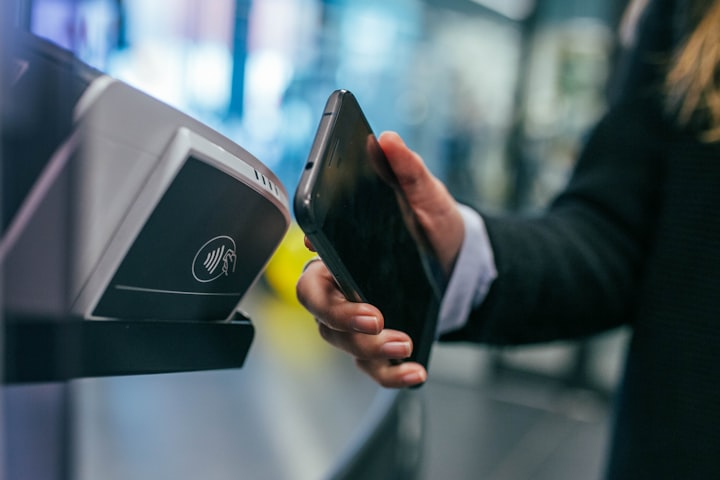What To Expect On The Digital Payments Front In 2021
Keeping up with the times, the Payments industry evolved a variety of trends to meet the demands of both businesses and customers during and after a pandemic. Digital payments saw an unprecedented rise, squeezing its way past the primitive and antiquated cash transactions.

Rowing across the turbulent seas of 2020, the Indian online payment gateway sector discovered innovative methods to deal with the pandemic's unforeseen twists and turns. As the epidemic confined Indians to their homes, limiting them access to key services, technology played a critical role in ensuring a smooth transition.
Keeping up with the times, the Payments industry evolved a variety of trends to meet the demands of both businesses and customers during and after a pandemic. Digital payments saw an unprecedented rise, squeezing its way past the primitive and antiquated cash transactions.
Coronavirus Pandemic a boon or bane to the Digital Payments
However, as the year comes to a close, individuals are filled with optimism and expectations for a prosperous new year. Here are some of the forecasts for a spectacular 2021 in the world of digital payments.
UPI: Escalating in leaps and bounds
The Unified Payments Interface has consistently broken all records during 2020, and analysts predict that it will do so again in 2021. UPI recorded 2234.16 million transactions at the end of December 2020 and has consistently surpassed the two billion transaction volume milestone every month. It will cross the following threshold for the first time ever in October 2020. UPI's popularity has expanded far and wide as a low-cost, simple medium of online financial transactions, and other nations are beginning to build a comparable platform. This certainly bodes well for UPI in the foreseeable future.
Tap and Go: Welcomed with open arms
Contactless payments were well accepted by Indians during the epidemic, with a 15x increase in a couple of months. Recognizing the people' adaptation and boosting digital, tap and pay, the government increased the limit for payments without a PIN from INR 2000 to INR 5000 beginning January 1, 2021.
P2P Payments and open API Payments
Rapid innovation and adoption- We have seen numerous innovations in P2P payments over the previous decade, and the next decade is likely to witness the development of innovations in the B2B payments segment. According to experts, large corporations and mid-sized enterprises will also use open API banking for best payment gateway India and trade-based cooperation.
Password-less: A new possibility
People may soon go passwordless to make payments easier, but with a greater move to biometric, strengthening the security system for the digital sector. With FinTech and mobile banking services bringing banking and payments to our fingertips, critical security measures must be implemented to prevent fraud and theft. This is where biometric security systems have emerged as a trustworthy and failsafe technique, elevating security to a new level.
Digital Payments:
The ever-increasingly popular default method of payment- In terms of online payment gateway progress, there is undeniably no reverse gear until 2020. Several solutions gained popularity during the epidemic, demonstrating how simple and critical it is to transition to a digital platform. Contactless payments, POS payments, and finance systems will all undergo significant transformations to guarantee that digital choices are the first chosen options. An increase in wallets will also make it more appealing and easier for clients to make transactions.
Contactless and Quick Payments:
With the pandemic scenario in hand, the digital payments infrastructure allowing rapid and contactless internet commerce in this ongoing "at home" situation is likely to witness a faster uptake from small companies. Manish Patel, CEO of Mswipe, believes that contactless and fast forms of digital payments would become the standard for payment players as more SMEs in India are projected to adopt digital by 2021.
Furthermore, the government's continuing push for obligatory FASTag for all vehicles would undoubtedly propel digital payments to new heights. Scan and Pay technology is also expected to take off, as contactless payments become the most popular payment method among customers.
Open banking: A revolutionary way
Open banking is another interesting technology that is making its way into our radar. Open banking, which is connected to the Second Payment Services Directive, links together banks and FinTech by permitting data networks between institutions. This technology compels banks to provide data in a standardized, safe manner, facilitating information sharing between authorized internet organizations. Furthermore, open banking allows third-party applications to manipulate users' banking and financial information through APIs and AI. According to projections, open banking would reach USD 43.15 billion by 2026, expanding at a CAGR of 24.4 %.
Cross-border payments: A Seamless affair-
Contactless payments have increased demand for virtual best payment gateway India alternatives such as cross-border payments, with the global transaction value of global transfers reaching almost USD88 billion in 2020, representing a 10% year-over-year increase. Future cross-border payments will be all about giving payees and payers more alternatives, such as seamless fund deposit into any bank account, online spend, and fund transfer anywhere in a number of currencies. It will also make the procedure easier by removing the lack of transparency, hefty transaction fees, and lengthier wait times.
Buy now, pay later: A strong emerging option-
Nonetheless, the virtual credit system has taken people by surprise. With digital acceleration, the buy now, pay later option is growing popular with a variety of start-ups, allowing customers to make purchases without having to pay the whole amount up front. It gives clients quick flexibility and modest loans without breaking the banks.
About the Creator
Amit Kumar
Full-time thinker & part-time writer...






Comments
There are no comments for this story
Be the first to respond and start the conversation.